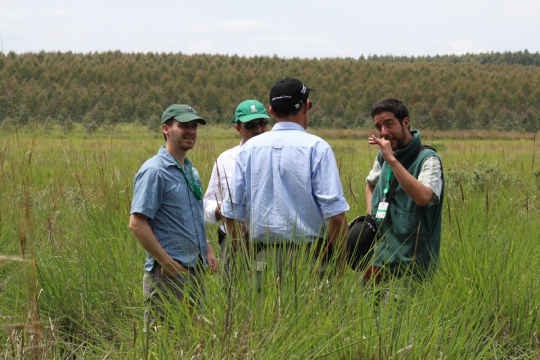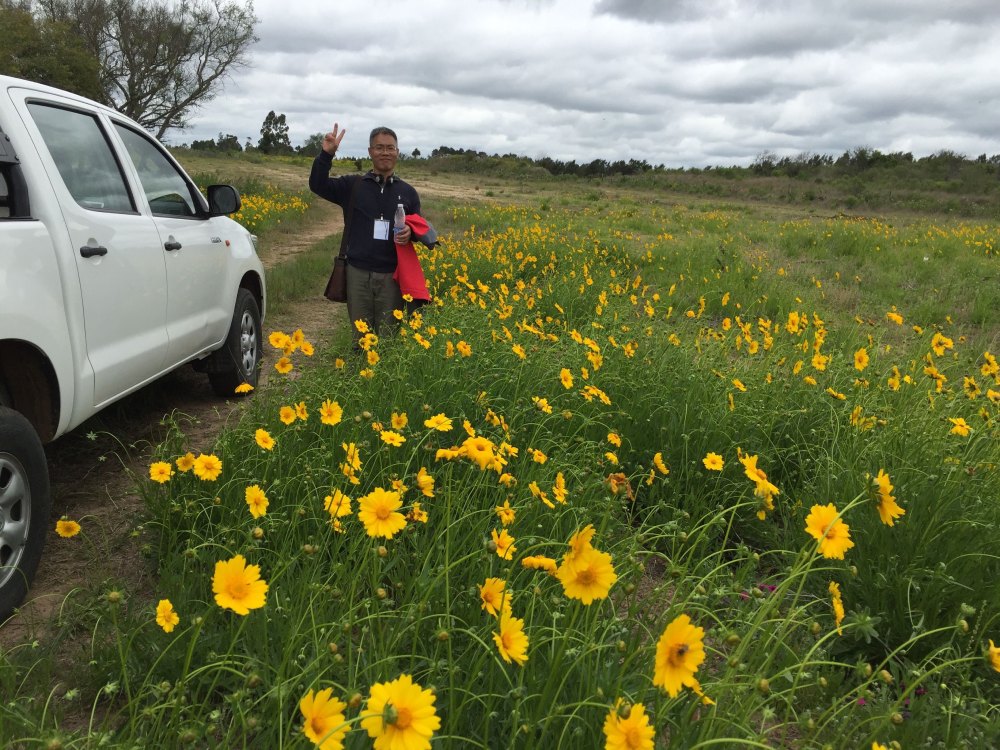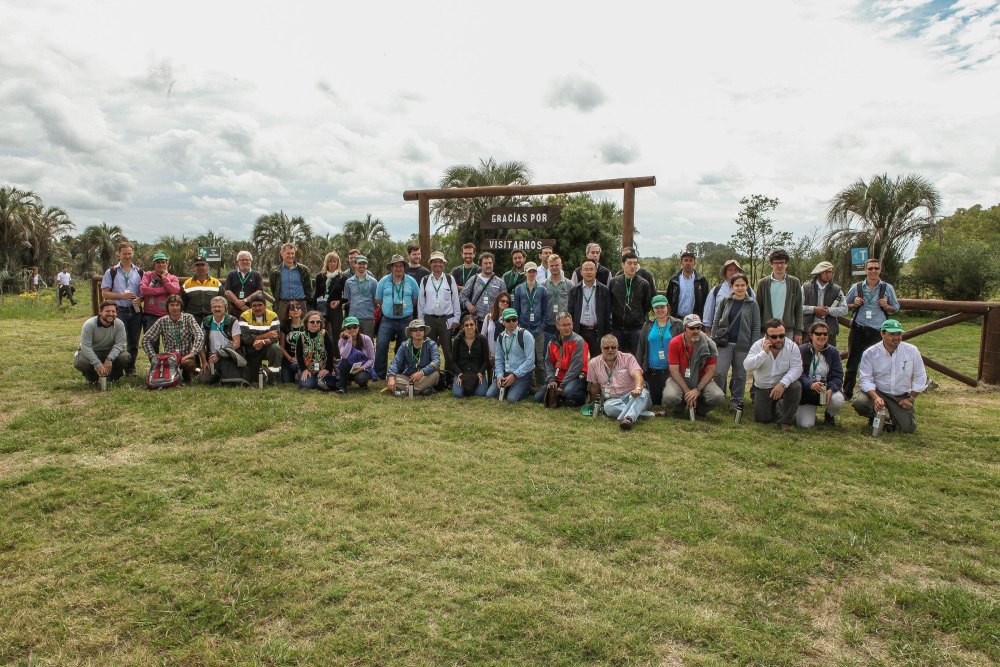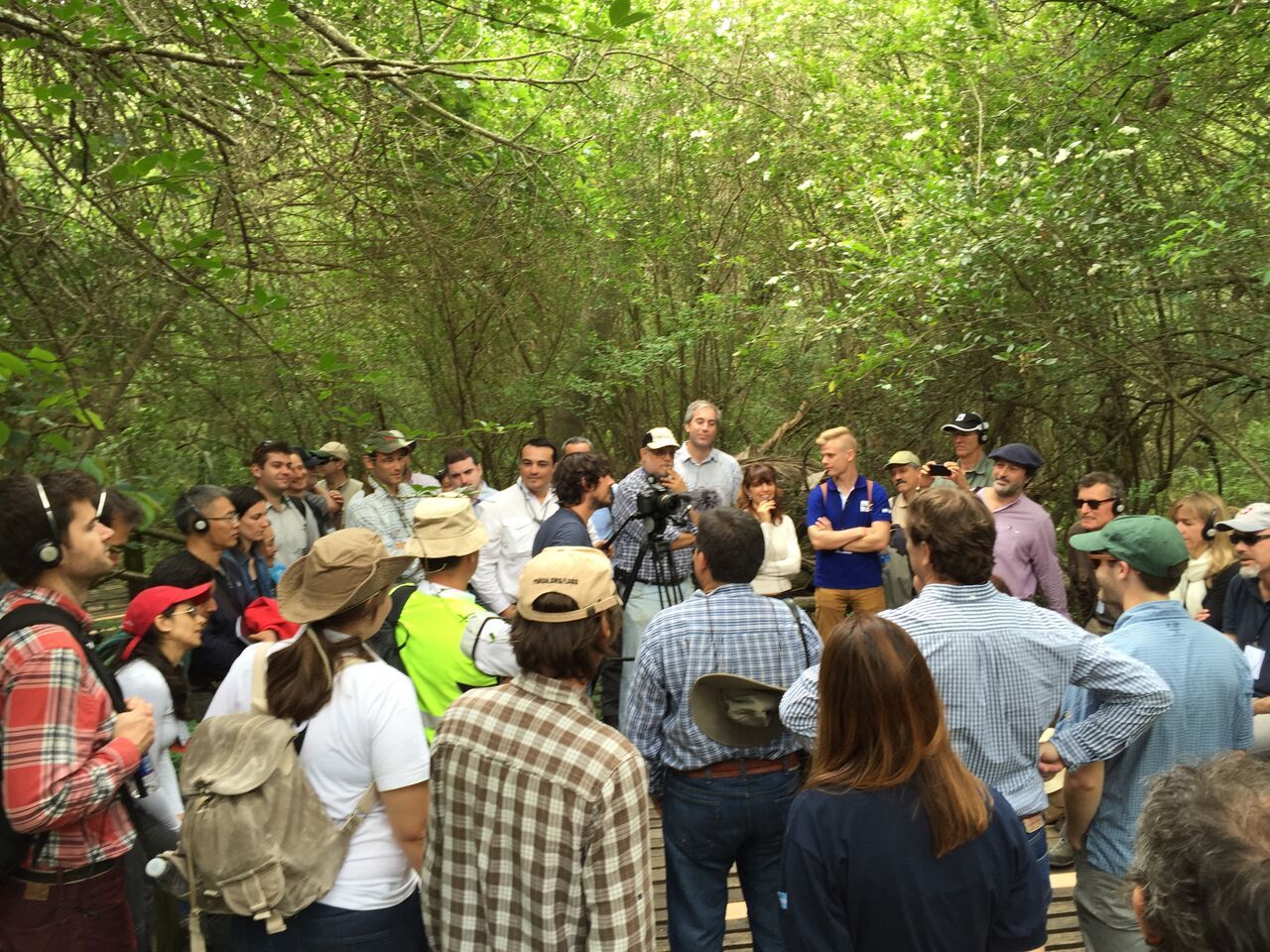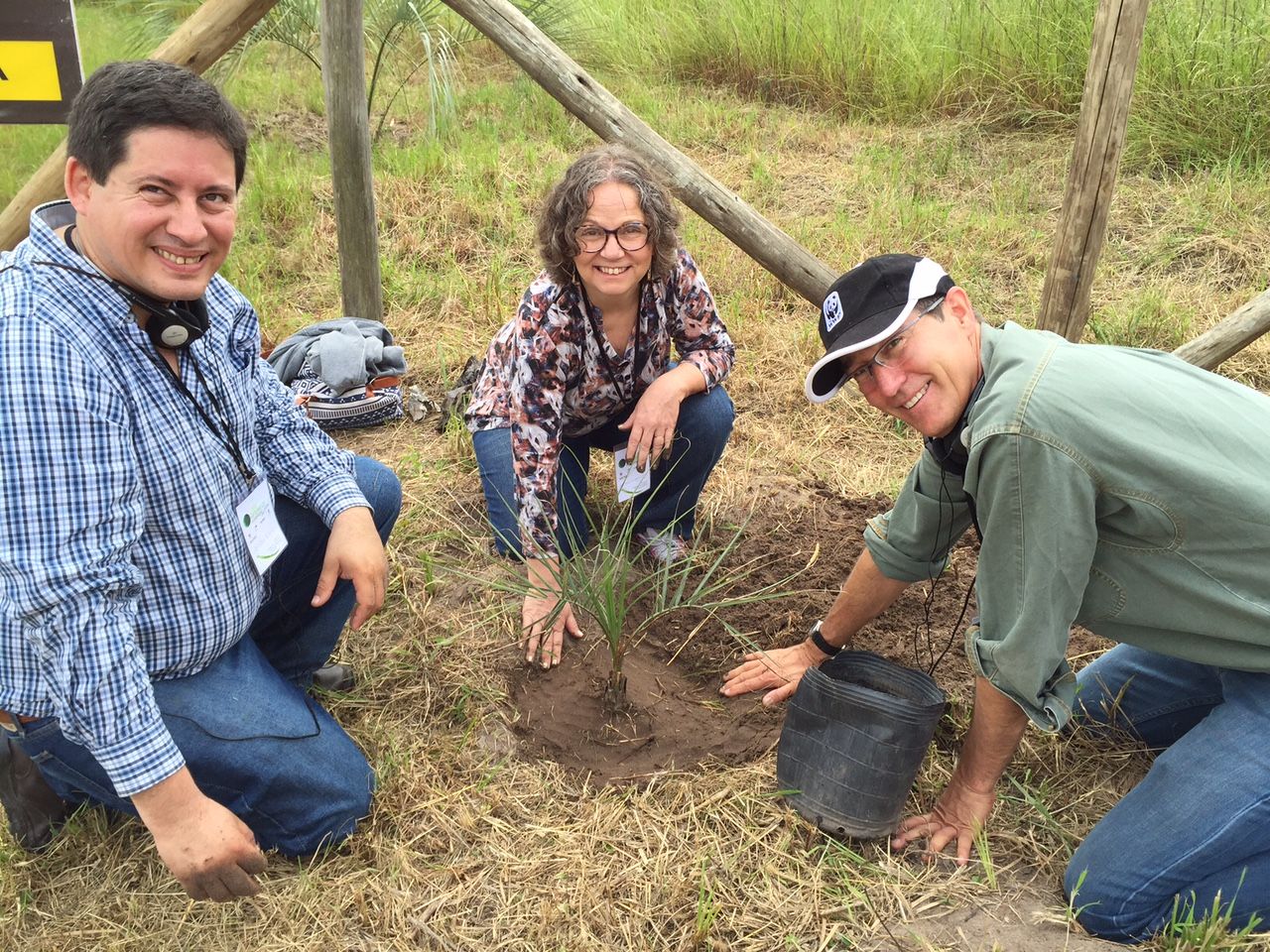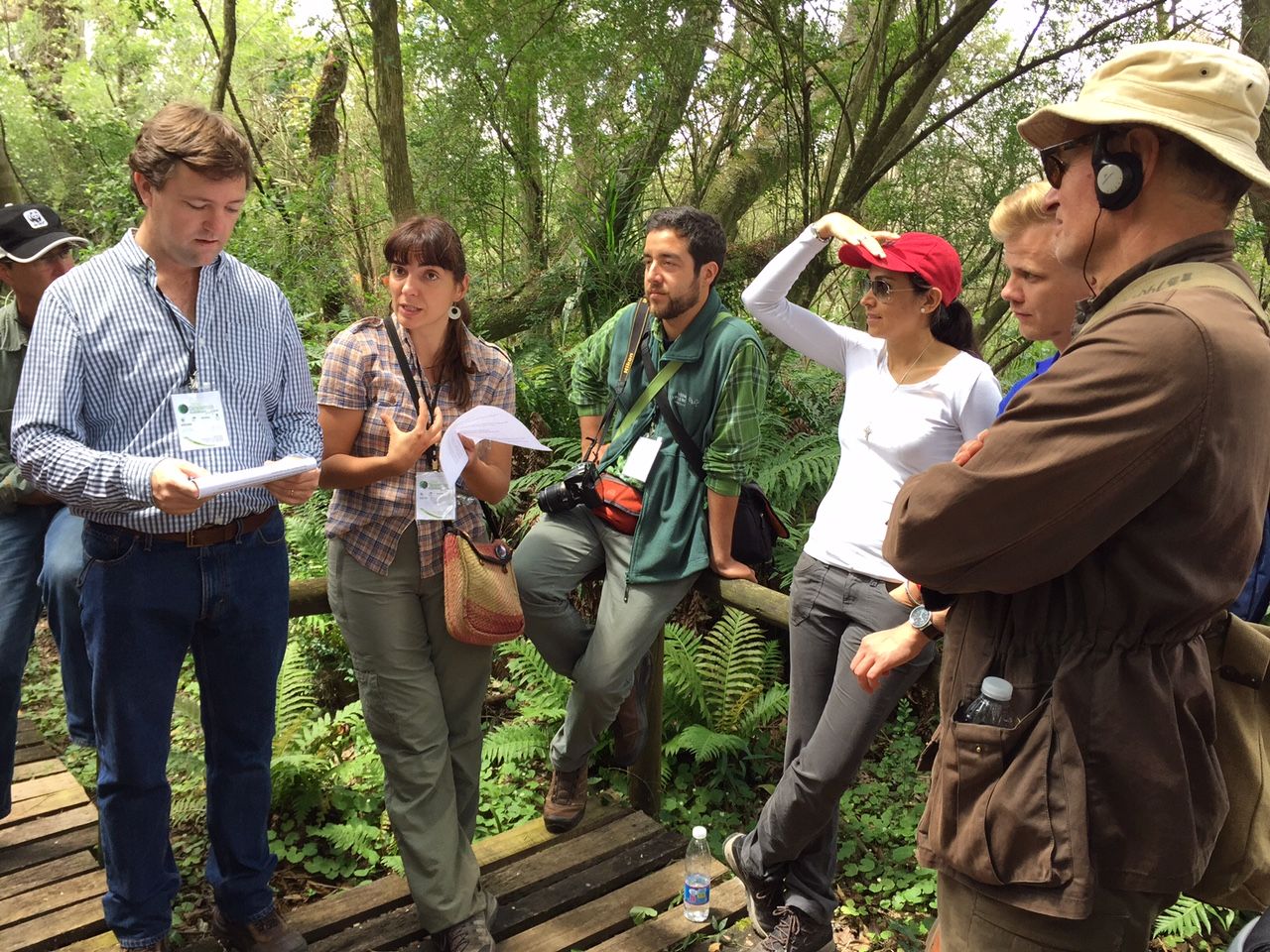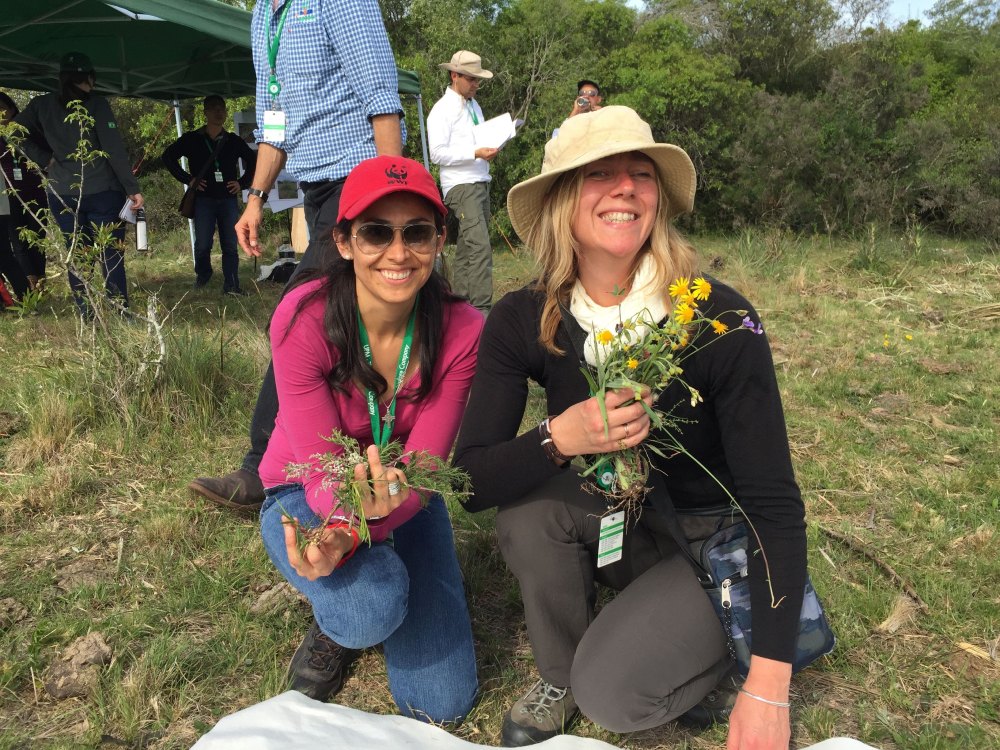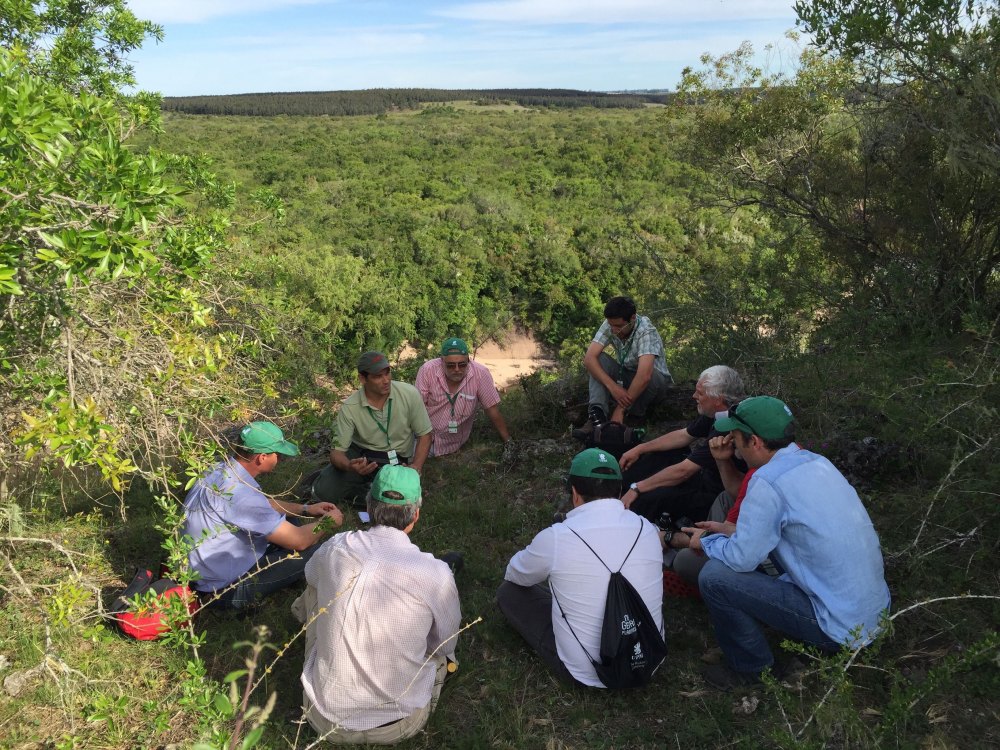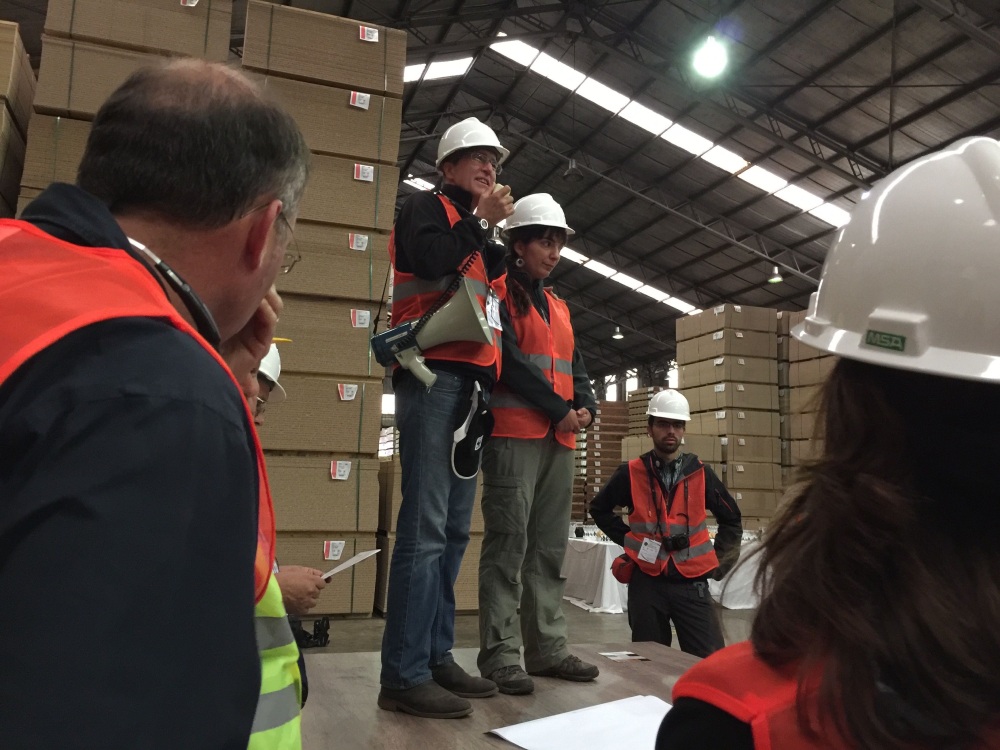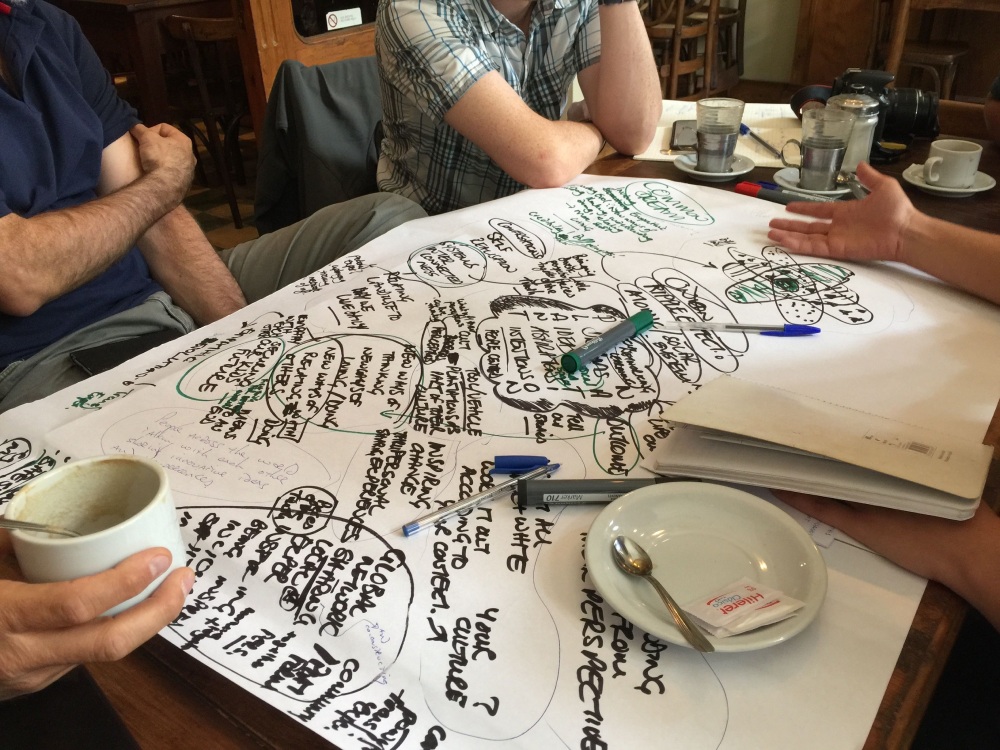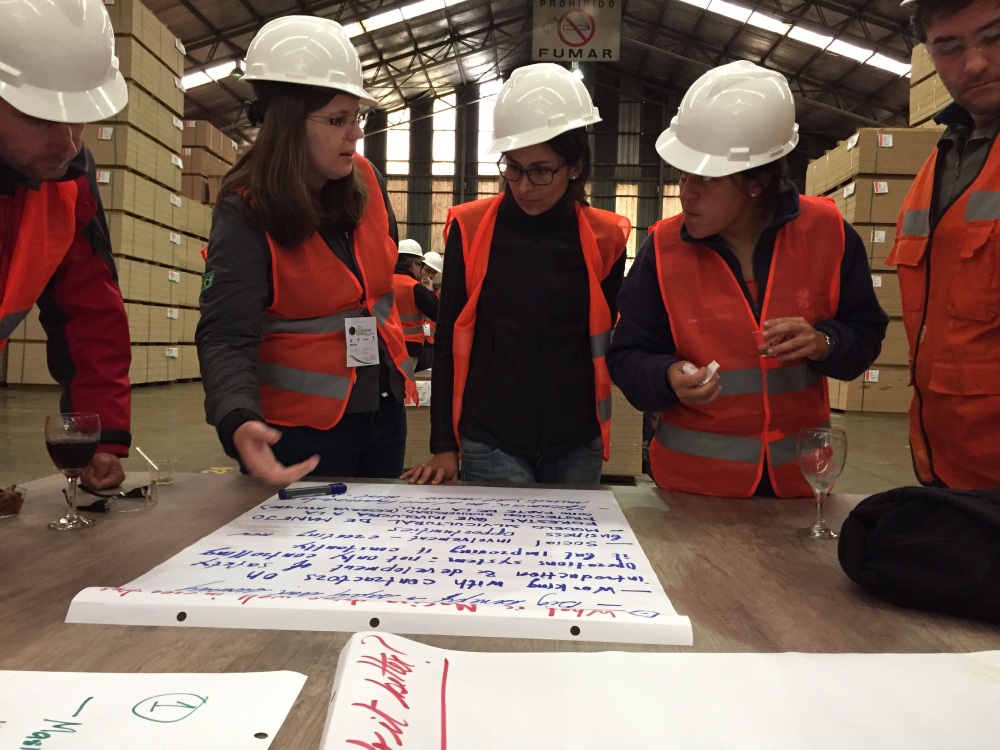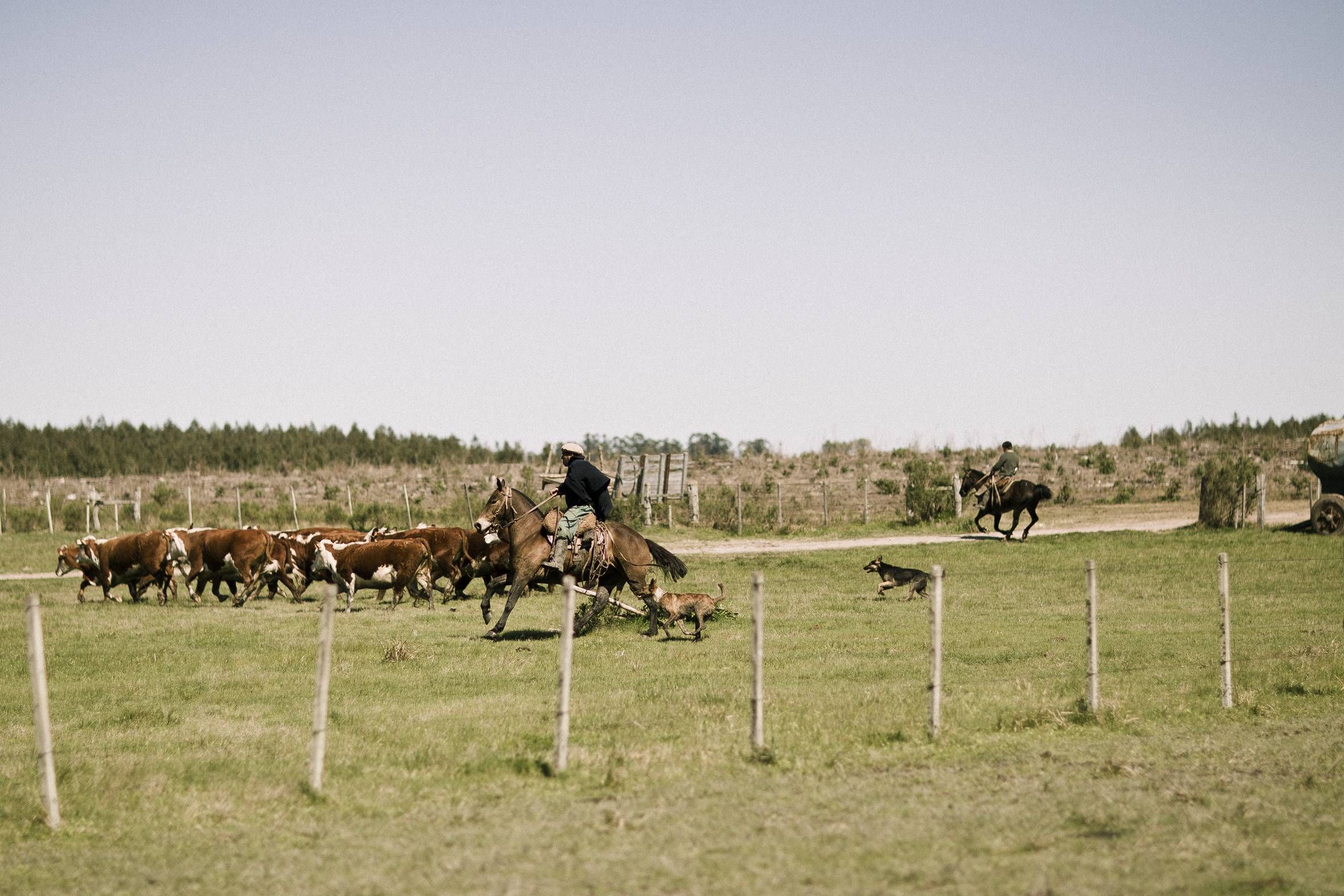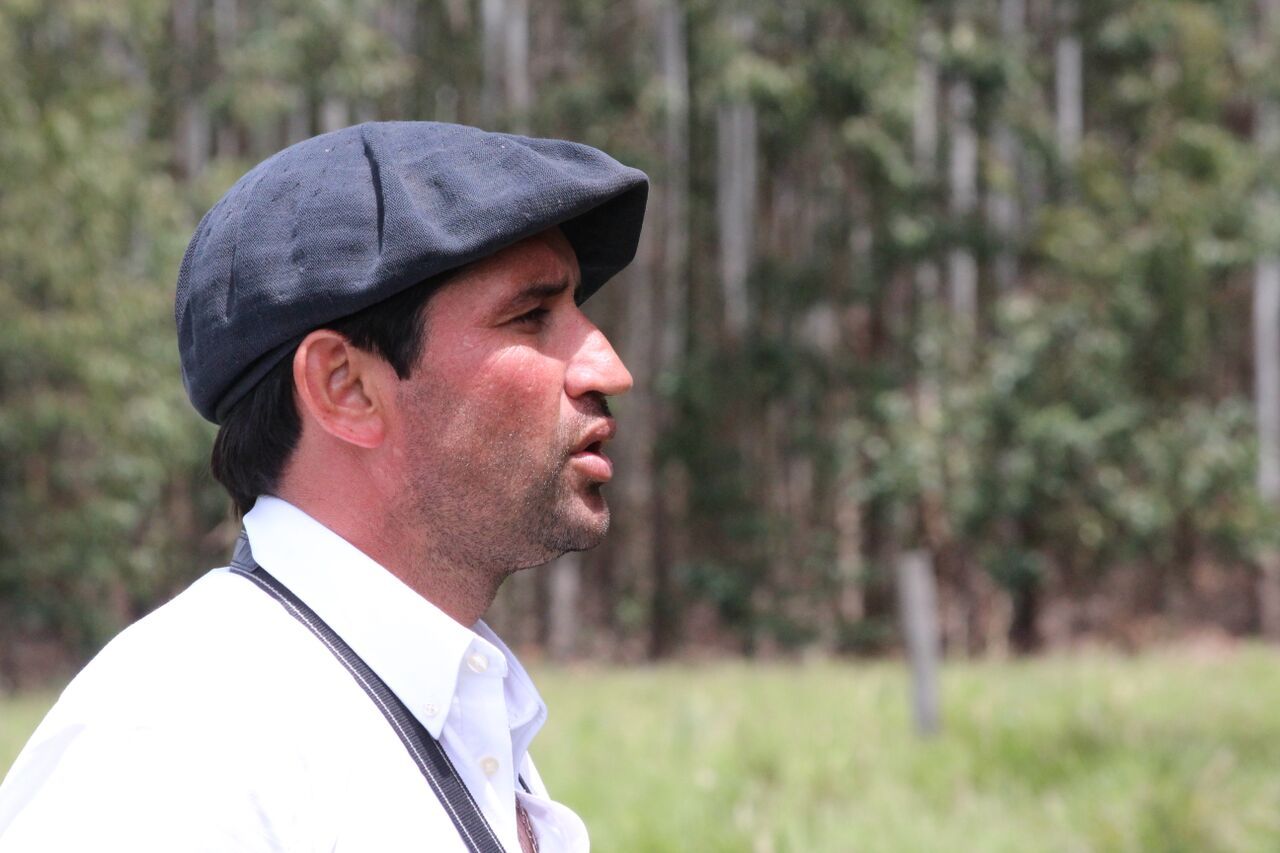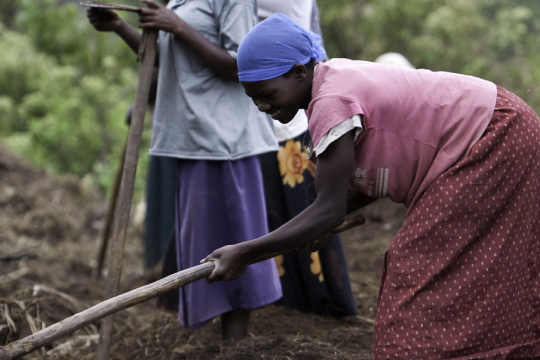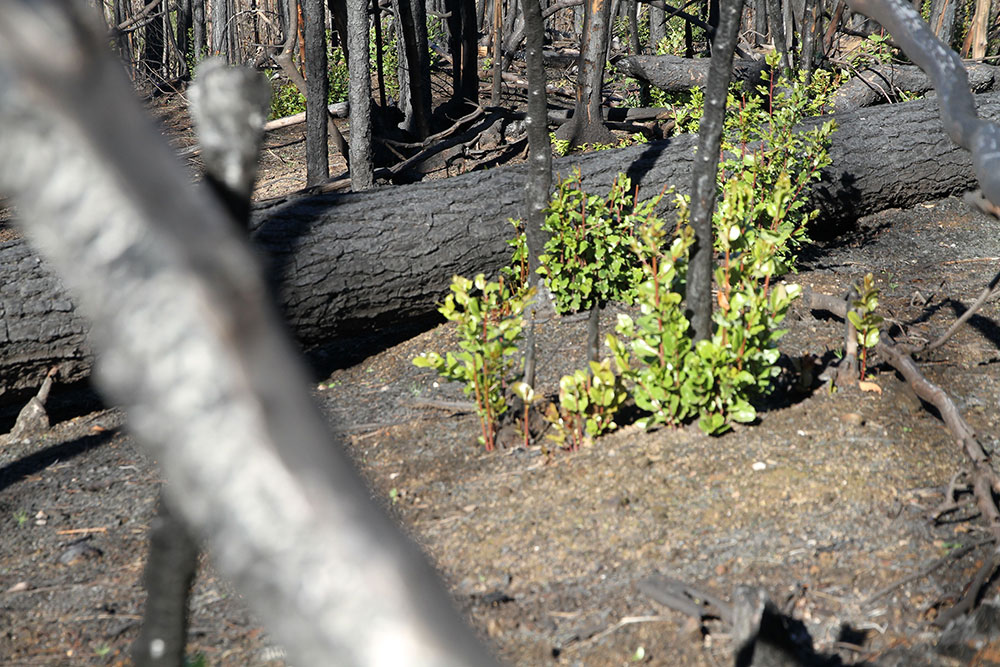I wake early on Friday morning to put the finishing touches to a presentation and to prepare a slideshow of images from the week to display during the coffee breaks today.
It’s always fascinating to sort through the photos and see how the expressions on people’s faces have changed over the week, and also the level of interaction. At the start of the week in the Argentinian government offices in Buenos Aires, there are not many people smiling, and people are generally in groups by country, company or sector. But quickly these groups become much more diverse, faces look more relaxed (if tired) as the week goes by.
Reminding people of the week’s activities is also important, for everyone to see the level of cooperation and empathy, which makes the NGP study tours so special. Friday is an indoor day in Paysandu, finishing after lunch with most of us returning to Buenos Aires and flights home.
The first presentation of the day is from Gonzales of the Uruguayan environmental NGO Vida Silvestre. Gonzalo begins by reminding us of the importance of natural grassland ecosystems in Uruguay. Although they still represent about 60% of the land area, some 800,000 hectares have been lost since 2000 – and much larger areas are being degraded through overgrazing. Natural grasslands account for 13% of the land in South America but internationally are the least protected biome, with only 1% of this area under an official ecological regulation.
Vida Silvestre have been working with UPM in Uruguay for a number of years, helping them with land-use planning and monitoring and managing natural reserves on company land. The two organizations have a simple but strategic approach to conservation planning, using the widely recognized Open Standards for the Practice of Conservation.
It’s a circular process, which enables them to develop “adaptive management” for the natural reserve areas. All sites are first surveyed, important habitats identified, and management plans are developed and implemented; then the sites are monitored for change and re-surveyed, and the management adjusted if necessary. Vida Silvestre are working with a number of other large land managers, with the aim of creating large, interconnected corridors of reserve areas which will ultimately link with official protected areas.
It’s interesting that Vida Silvestre work and interact with people throughout the company, not just the environmental team. This means that everyone understands the importance of environmental concerns and that they are properly embedded in the management processes.
In conjunction with UPM’s land-planning department, Vida Silvestre are developing an online tool to help land-use planning decisions, and to identify and reduce land-use conflicts. The tool looks at a number of aspects, including protected areas, soil types and local climate. It helps identify priority areas for the main land-use types – natural and improved grasslands, arable land, forestry plantations and biodiversity areas. It will be interesting to see how the tool develops and how it can be used to optimize land use, when the pressure for agricultural and forestry intensification increases.
The next presentation is from Ivan Grela of UPM, who has been our main host and coordinator over the last two days. The focus is on restoring plantations to grazing – a key concern for many farmers. UPM has been studying six project sites, all of which have been plantations for at least 10 years. The sites are surveyed for ground cover before and after the trees are harvested, and then monitored for several years. As quickly as five months after harvesting, the sites are starting to green up with some grasses and other pioneer species. Eucalyptus branches are small and light, and they break down relatively quickly. The stumps take a little longer – usually about 10 years – but as there is no need for mechanical soil preparation this doesn’t seem to matter. Cattle grazing had a significant impact on species development, but most sites quickly had over 40 grass and herbaceous species within a few years.
The final group exercise was designed to help the core NGP team to further develop our PlantNation website – an online space where the issues around plantations can be discussed and shared. The idea is to recreate the enthusiasm of an NGP study tour and extend it as widely as possible. The website has existed for about nine months and has just been redesigned. We’ve already been quite successful with a lot of retweets and other social media interaction, but we want to take things to the next level.
We split into groups to think about what we could improve and how. It’s fascinating to share what had only been a rough idea 12 months ago and to get this valuable international feedback. Within an hour we have several pages of notes and a Top 5 list of new ideas, chosen by a jury.
Anyone can use PlantNation – www.newgenerationplantations.net. If you’ve found this blog interesting, then you are our target audience – please log in and join our online community.
After a final lunch, we say our goodbyes to our amazing Uruguayan hosts and climb back aboard the bus to travel the short distance to the border crossing and onwards to Argentina. Driving south through Argentina towards Buenos Aires, it’s good to reflect on how quickly 40 people from 12 countries were able to work together and begin to understand a wide range of issues. I’m reminded that trying to reach a definitive answer for many social and environmental challenges is not what’s important. It’s how we work together, to develop a greater understanding and trust, that’s really essential. In the face of climate change, biodiversity loss and globally shifting demands for plantation products, any definitive answer will quickly need revising anyway.
Arthur C Clarke once said that the future is already here, it’s just unevenly distributed. Perhaps we already know the solutions to many of our global problems, and we simply need to build the connections and trust to share that knowledge and understanding.
A huge thank you to everyone from Masisa and UPM who hosted us so well; and to the stakeholders who spoke openly with us. The WWF team who I’ve been privileged to work with are incredible, and kept the energy high all week despite some very long days – Luis, Elena, Pablo, David and Brent – thank you, it’s been a lot of fun. And finally to Barney in the UK and Anna in Finland who have converted some very rough notes into something readable and got it published on the website: thank you!
Please visit PLANTNATION where you can learn more about plantations, and will soon to be able to see a range of videos and interviews from the week.
